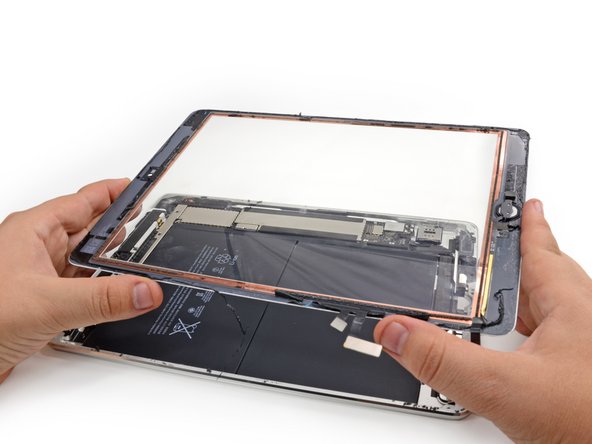Sometimes we sound like a broken record when it comes to terrible repairability, and we get it—seems like there’s a lot of product bashing going on lately. Yet for every fixable Nexus 7 and Kindle Fire, there’s a Surface Pro—or in this case, an iPad Air—to saturate the market with unrepairable devices.
With the release of every shiny new generation of iPad, a certain percentage ends up looking like this. And then what? With a hard-to-repair device, the fix is either expensive or impossible. It hurts the consumer, sucks for the environment, and contributes to the device’s untimely demise. That’s “no bueno” on many different levels, if you ask us.
So, today it’s the iPad Air’s turn. Just like last week’s 13″ MacBook Pro with Retina Display, things took a turn for the worse. The battery is now a 2-cell unit and the adhesive is even harder to remove. The changes to the new iPad are bad for repairability, but not quite bad enough to halve its score from 2 to 1. It was an extremely close call, though. We wrestled with the decision for quite a long time before reaching our conclusion.
Batman’s iPad Air Video Review:

Teardown highlights:
• This is basically how we take apart iPads. (Happy Halloween!)
• Getting into this iPad is a bigger pain in the neck than a date with a vampire—but no amount of iPad blood can spook our stalwart iOpener.
• The Air’s 3.73 V, 32.9 WHr, two-cell power plant is decidedly less monstrous than the previous iPad’s 43 WHr, three-cell behemoth.
• Despite the new cable dressing up this home button, Apple’s Touch ID fingerprint sensor is nowhere to be found; it remains exclusive to the iPhone 5s for now.
• Just after the second round of iOpener action, we got one last coherent message from our field agent before strings of expletives:
[7:29:22] Walter Galan: “It’s the worst battery ever.” So much glue.
• The bucket-full of ICs powering this Pad:
- Apple APL5698 A7 Processor—a slightly different version from the APL0698 in the iPhone 5s
- Elpida F8164A1MD 1 GB LPDDR3 SDRAM
- Toshiba THGBX2G7B2JLA01 16 GB NAND Flash
- NXP LPC18A1 (Apple M7 Motion Co-Processor)
- Apple 343S0655-A1—looks to be a Dialog Power Management IC, according to Chipworks
- USI 339S0213 Wi-Fi Module
- Apple 338S1116 Cirrus Audio Codec, also found in the iPhone 5c
- Two Broadcom BCM5976C1KUB6G Touch Screen Controllers
- Qualcomm M9616M LTE Processor with 1 Gb (128 MB) of DRAM
- TriQuint TQF6514 RF Power Amplifier Module—similar to the 6414 in the iPhone 5s
- Three Skyworks SKY77-series LTE RF Power Amplifier/Duplexer Modules
- Two Avago A79-series LTE RF Power Amplifier/Duplexer Modules
- 227 LG—likely a Murata Antenna Switch/Filter Module
- WTR1605L Transceiver Module
- Qualcomm PM8018 PMIC




0条评论